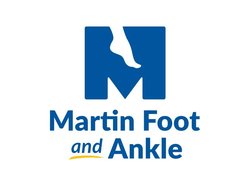Your feet are the foundation for your body, helping you get from point A to B and acquiring significant wear and tear throughout your life. That said, taking care of your lower limbs is essential to prevent infection and injury. In this blog, we highlight a few ways to help keep your feet and ankles as healthy as possible so you can continue to put your best foot forward.
Do A Daily Foot Check
Most of us take a moment to look at ourselves in the mirror every day, but we often neglect to think of the body's foundation–the feet. So begin adding a 'foot and ankle check' to your daily routine to examine your lower limbs for cuts, bruises, scrapes, blisters, and anything that looks out of the ordinary. Many severe foot infections begin as minor cuts and blisters, so it's vital to catch issues as soon as possible. If you notice an abnormality on your lower limb, start a note to track its progress over the next few days. If the condition doesn't improve, or worsens, contact us immediately.
Additionally, for those with diabetes or poor circulation, minor cuts and abrasions may not always heal properly or quickly enough to prevent infection. Also, individuals with reduced nerve function may not feel any pain where the issue is present. Taking a few minutes each day to look over your lower limbs to ensure they're in tip-top shape can make a big difference in the health and maintenance of your feet and ankles.
Never Skip The Warm Up
For those that enjoy moderate to strenuous workouts, activities, or exercise, it's crucial to take a few minutes before each activity to thoroughly stretch the feet, ankles, and other active parts of the body. Stretching will aid in an improved range of motion, keep the feet and ankles strong, and increase flexibility, which can contribute to providing additional support. Additionally, for those looking to challenge themselves physically, gradually increasing the intensity of your activity helps prevent many lower limb injuries.
Choose Shoes For Your Foot Type
Have you ever thought you may be wearing the wrong shoes for your feet? The type of shoes you should shop for depends on the size and activity and the shape of your feet. Those with pronated feet or low arches should select shoes that support the front of the foot and under the arch. Also, the heel and heel counter should be stable to provide additional support. Those with rigid feet or high arches should choose shoes with better cushion and a softer platform. For active individuals, it is best to use shoes designed for a specific sport, such as cleats, sneakers, and boots. Need help finding the right shoes for your lower limb needs? Visit The Right Shoe(opens in a new tab)! All footwear sold at The Right Shoe is podiatrist-recommended and carefully chosen to provide adequate support and comfort.
Manage Underlying Conditions
Some lower limb issues can worsen if underlying conditions are uncontrolled. Underlying conditions that can negatively affect foot health include smoking, excessive alcohol, poor diet, unchecked blood sugar, and obesity. Of course, the ideal long-term strategy for caring for your feet and ankles is caring for your whole body and mind. Staying on top of managing your condition will help keep your feet more resilient and resistant to lower limb issues like injuries, sores, and infections.
Listen to Your Body
Are you feeling lower limb pain when you move? Do you feel your body struggle to 'power through the pain' during a workout or activity? Your body is giving you signs and signals to slow down and seek treatment for your foot or ankle issue. Never ignore pain. Overlooking lower limb pain or prolonging treatment can result in more significant, sometimes severe, problems that may require surgical treatments. In addition, any condition left untreated will likely get worse over time.
Don’t let your lower limb issue set you on the sidelines all spring and summer. Make an appointment with your podiatrist when an injury occurs to help prevent your cut, scrape, bruise, tear, blister or break from worsening. To schedule a visit, call 717-748-5260 or fill out an online contact form.
